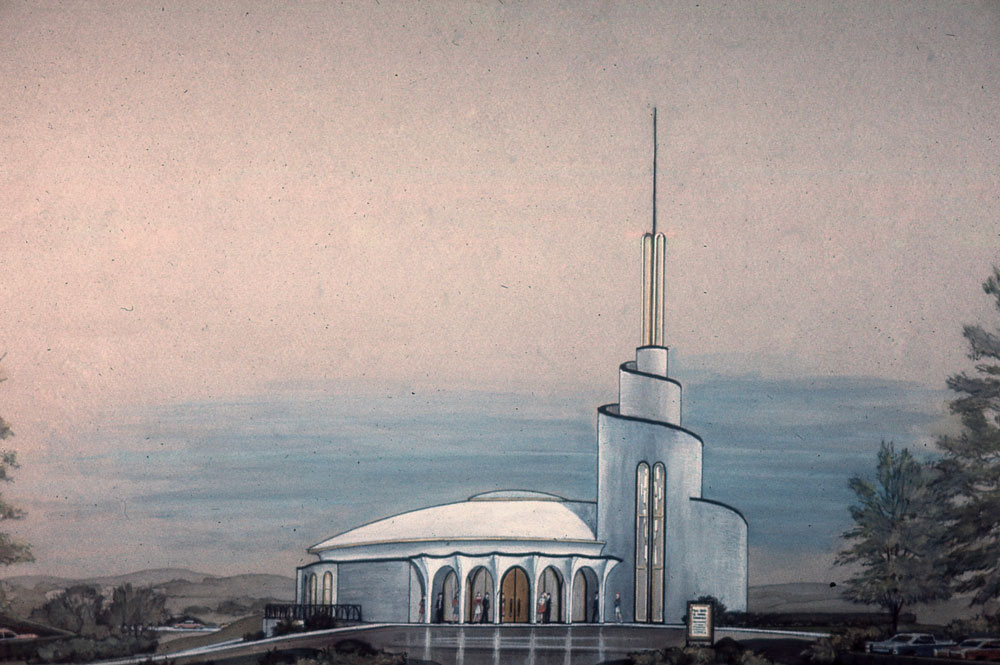
Faulkner Christian Science Church Architecture Collection Comes to Daystar
Daystar is pleased to report that in 2023, a collection of materials from the most prolific architectural design firm of Christian Science church buildings was donated to Daystar by Charles Draper Faulkner, Jr., and his family. The visually intriguing collection includes architectural drawings, photos, slides, and documents, among other historical items, related to the combined 75 years of design work of over 160 Christian Science churches by 20th century Chicago-based architects Charles Draper Faulkner, Sr., and Jr.
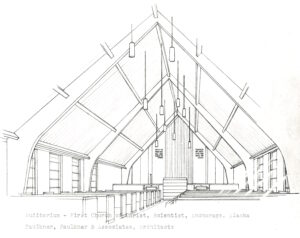
Interior elevation drawing, First Church of Christ, Scientist, Anchorage, Alaska,
Charles Draper Faulkner, Jr., 1957

Main facade, Eighteenth Church of Christ, Scientist, Chicago, Illinois,
Charles Draper Faulkner, Sr., 1925
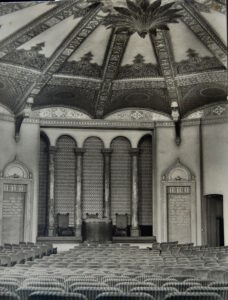
Auditorium, Eighteenth Church of Christ, Scientist, Chicago, Illinois,
Charles Draper Faulkner, Sr., 1925
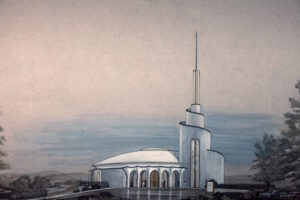
Presentation drawing, First Church of Christ, Scientist, Davenport, Iowa (unrealized),
Charles Draper Faulkner, Jr., 1971
Charles Draper Faulkner, Sr. (1890-1979), began his career in 1913 with the Chicago firm of Solon Spencer Beman, one of the architects of the 1906 Mother Church Extension in Boston. By 1919, he opened his own firm, Charles D. Faulkner, Architect, and in 1949 his son, Charles Draper Faulkner, Jr. (1926-), joined the firm. The two became partners in 1959 and established Faulkner-Faulkner & Associates. When Charles Sr. passed on in 1979, Charles Jr. continued as the principal and lead architect of the firm until his retirement in 1994.
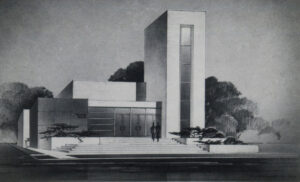
Presentation drawing, First Church of Christ, Scientist, Austin, Texas,
Charles Draper Faulkner, Jr., 1952

Main facade, First Church of Christ, Scientist, Austin, Texas,
Charles Draper Faulkner, Jr., 1952
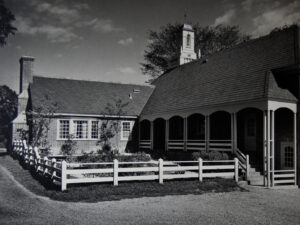
Side view, First Church of Christ, Scientist, Williamsburg, Virginia,
Charles Draper Faulkner, Sr., 1958

Merit award certificate given to Charles Draper Faulkner, Sr., for design of First Church of Christ, Scientist, Williamsburg, Virginia, 1959
Both Charles Sr. and Jr. designed a variety of commercial and residential buildings, but they primarily designed Christian Science church edifices. Between them both, the Faulkners designed over 160 Christian Science churches, the most of any firm in the world. Their designs were constructed in 38 states in the US and in Tokyo, Japan.
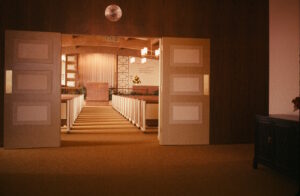
Foyer and auditorium entrance following renovation by Faulkner-Faulkner firm, Third Church of Christ, Scientist, Chicago, Illinois, 1965
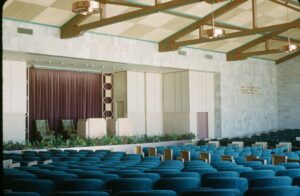
Auditorium, First Church of Christ, Scientist, Tucson, Arizona,
Charles Draper Faulkner, Sr., 1949

Auditorium, Fourth Church of Christ, Scientist, Milwaukee, Wisconsin,
Charles Draper Faulkner, Sr., 1928

Main facade, First Church of Christ, Scientist, Lakewood, Ohio,
Charles Draper Faulkner, Sr., 1922
The scope of the Faulkner collection focuses primarily on the middle and late decades of the 20th century. The content of the collection includes original design contracts, architectural drawings and renderings, large-format photographs, 35mm color slides, digital photograph files, drafting tools, state registration embossing seals and licenses, award certificates, and books.
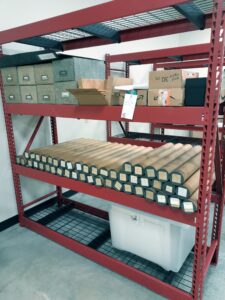
Unprocessed Faulkner Collection on shelves in archival storage at Daystar soon after receipt, January 2023
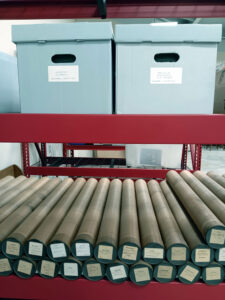
Faulkner Collection after initial processing in archival storage at Daystar, February 2024
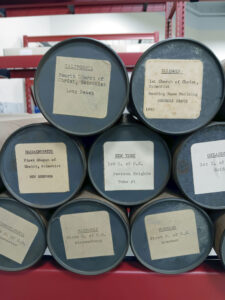
Tubes of original working drawings awaiting further processing in Daystar archival storage area, February 2024
Notable books include Notes on Architecture: Responsible Architectural Design by Charles Draper Faulkner, Jr. (2022, 183 pp.), a self-published, well-illustrated biographical and philosophical survey of the careers of Charles D. Faulkner, Sr., and Jr., and Christian Science Church Edifices by Charles Draper Faulkner, Sr. (1946, 417 pp.), another self-published, well-illustrated survey of designs of Christian Science church edifices (including those of other architects besides Charles Sr.) primarily in the United States, as well as a guide to the processes undertaken to plan for and construct an effective Christian Science church building.
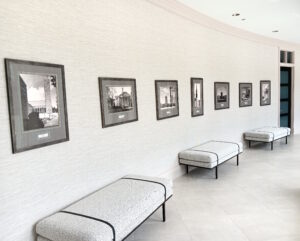
Gallery of Faulkner firm photographs of various Christian Science branch churches on display in concourse of new wing at Daystar, April 2024
Guests to Daystar are warmly invited to view featured items from the collection on display, and research requests may be submitted to info@daystarfoundation.org.
